Introduction
Autism elopement can be a daunting challenge for any parent or caregiver, as it involves a child with autism leaving a safe area without permission or supervision, often leading to potentially dangerous situations. Addressing this behavior is essential to ensure the safety and well-being of these children. By understanding the causes and triggers of elopement, creating effective safety plans, and utilizing behavioral interventions, parents can significantly reduce the risks.
Additionally, leveraging modern technology and establishing robust emergency response plans offer practical solutions to prevent elopement. Equipping children with essential safety skills and engaging with community resources further solidifies a comprehensive approach to managing autism elopement. This article delves into these strategies, providing parents with the guidance and resources needed to navigate this complex issue and ensure a safe, supportive environment for their children.
What is Autism Elopement?
Autism wandering happens when a young person with autism exits a secure location without consent or oversight, creating considerable safety hazards. This behavior can happen suddenly, leading to potentially dangerous situations. Comprehending and tackling the issue of running away is essential for parents and caregivers. As Dr. David Offord, a renowned psychiatrist for young people, emphasized, ensuring that children, including those with disabilities, have a supportive environment is fundamental to their mental health and overall well-being. Involving youngsters in secure, organized pursuits while acknowledging their individual requirements can assist in lowering the anxiety that results in running away. For instance, ensuring caregivers have access to resources, such as reliable pediatric care available through services like Summer Health, can offer the assistance needed to manage and prevent elopement effectively. By combining these approaches, parents can create a safer environment and better support their offspring's development.
Causes and Triggers of Autism Elopement
'Elopement in individuals with autism and ADHD can be driven by various factors such as sensory overload, anxiety, or the pursuit of independence.'. Recognizing these triggers is essential for developing effective preventive strategies. For instance, understanding that a child may elope due to overwhelming environments allows for tailored interventions to mitigate distress. Programs like the Kevin and Avonte Program emphasize the importance of public awareness, community partnerships, and education in addressing wandering. This initiative, named after two autistic teens who tragically drowned after wandering, has awarded $10.3 million to 77 grant recipients since 2018. These grants support local programs in locating and recovering individuals who wander, as well as enhancing emergency protocols and alert systems. By identifying specific triggers and implementing comprehensive strategies, we can create safer environments and reduce the risks associated with wandering.
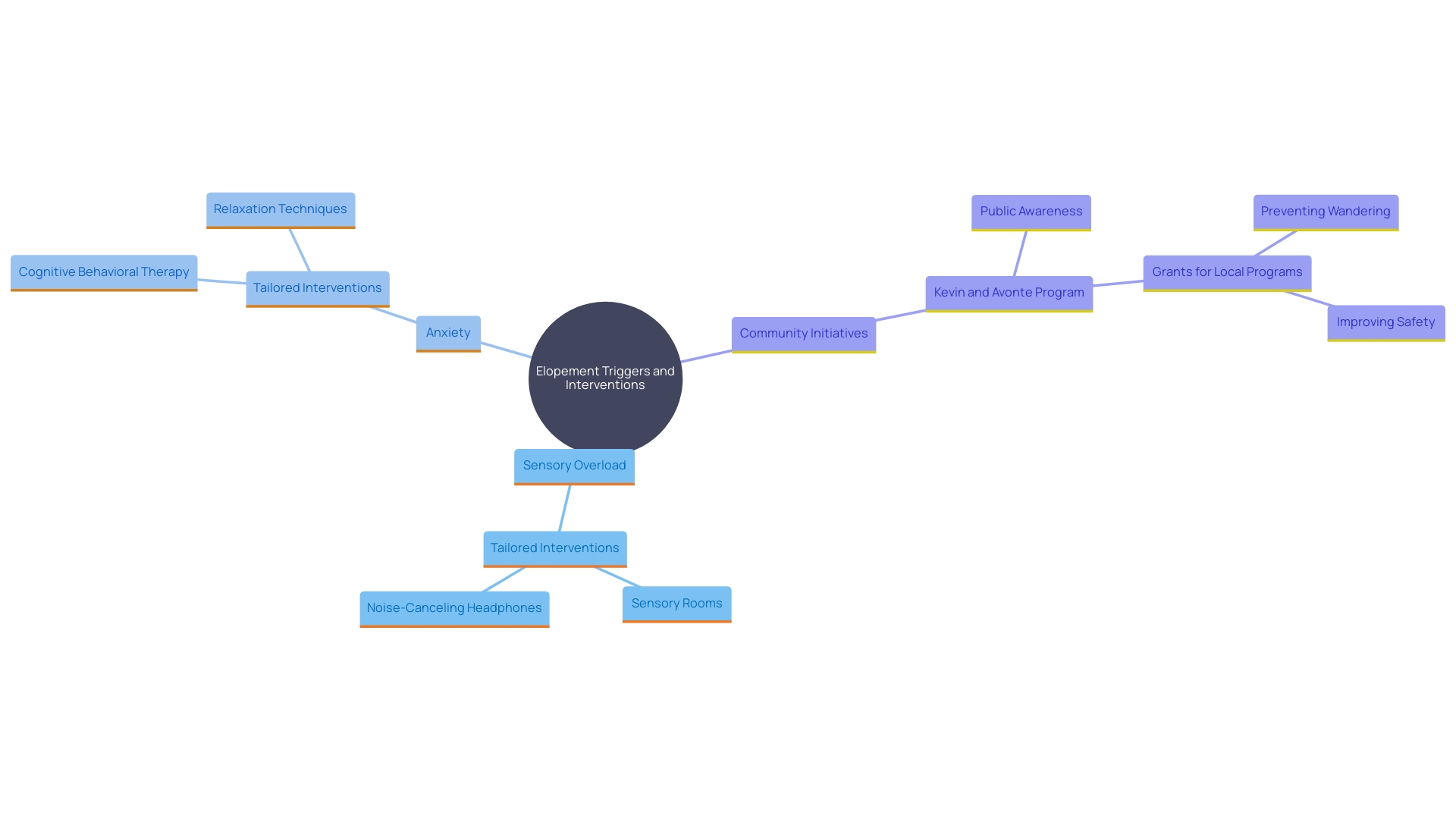
Creating a Safety Plan for Autism Elopement
Developing a safety plan for a young person at risk of elopement involves several critical steps to ensure their well-being. Start by identifying safe locations where your offspring can go if they feel the need to leave a situation, such as a neighbor's house or a familiar public building. 'Establish clear communication protocols, including whom to reach out to right away if your young one goes missing and how to utilize any tracking devices, such as the SafetyNet program employed by the Hillsborough County Sheriff's Office.'. It's vital that all caregivers, including teachers and family members, are thoroughly informed about the plan and understand their roles. Consistently examining and revising the plan is crucial, as it enables you to adjust to your dependent's evolving requirements and any new situations that may come up. This proactive approach not only enhances your loved one's safety but also fosters a supportive environment for their development.
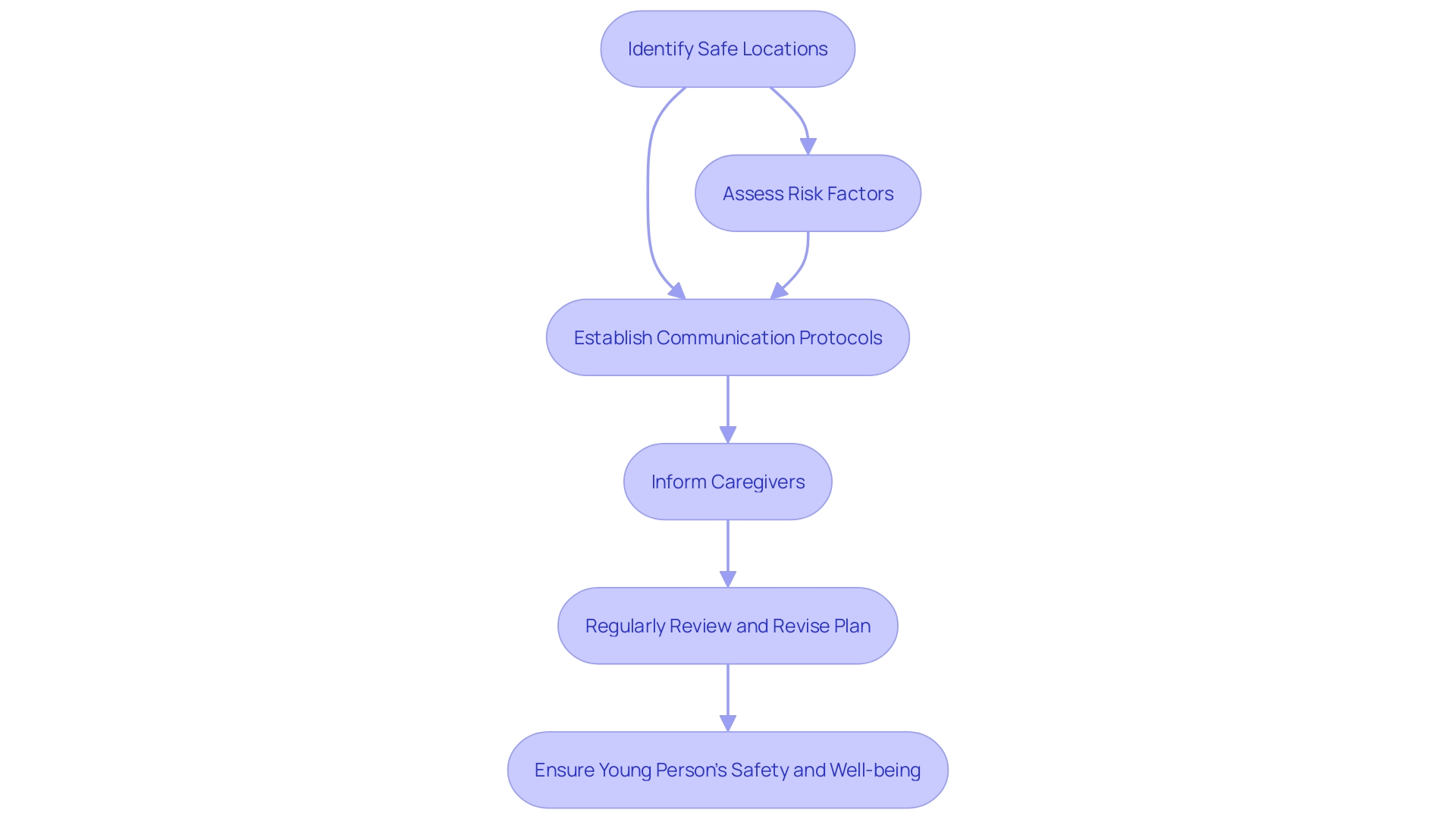
Behavioral Interventions and Strategies
Minimizing elopement occurrences in youth with autism and ADHD necessitates a comprehensive strategy based on behavioral interventions. Positive reinforcement for staying in safe areas can encourage young individuals to remain, while teaching self-regulation skills can assist them in managing impulses. Visual supports, such as picture schedules and social stories, can provide clear expectations and reduce anxiety. Working with a behavior analyst is essential to create tailored strategies that address each individual's unique needs.
The Kevin and Avonte Program, named after two autistic teens who tragically drowned after wandering, has been instrumental in addressing elopement. Since its inception in 2018, the program has awarded $10.3 million to 77 grant recipients focused on reducing injuries and deaths among individuals with developmental disabilities who elope. These grants facilitate public awareness campaigns, community partnerships, and the development of emergency protocols, which are essential in safeguarding vulnerable individuals.
Dr. David Offord, a renowned psychiatrist specializing in youth, highlighted the significance of fair assistance for individuals with disabilities, stating, “Engaged, peaceful, and well-supported participation of young people with disabilities in the major school, home, and leisure domains of their lives is a fundamental determinant of mental health.” Ensuring that individuals with autism and ADHD have access to support systems and services is vital for their well-being and safety.
Incorporating evidence-based practices and continually updating them based on the latest research can significantly improve outcomes. For example, randomized controlled trials have shown the effectiveness of various behavioral interventions, underscoring the need for ongoing research and adaptation in treatment approaches.
By employing these strategies and leveraging available resources, we can create a safer and more supportive environment for young individuals with autism and ADHD, ultimately fostering their development and well-being.

Teaching Safety Skills to Autistic Children
Providing your youngster with vital safety abilities is essential for their well-being. This involves teaching them how to differentiate between safe and unsafe situations, recognizing and respecting personal boundaries, and knowing how to respond in emergencies. Engaging in role-playing exercises can significantly reinforce these skills. For instance, you might simulate various scenarios where your young one has to identify potential dangers or practice calling for help. These hands-on activities not only make the learning process more engaging but also ensure that your young one is better prepared to handle real-life situations confidently and effectively.
Using Technology for Elopement Prevention
Technology provides effective solutions for preventing elopement in youth with autism and ADHD. GPS tracking devices and applications offer real-time location data, allowing parents to swiftly find their offspring if they stray. These tools have proven invaluable, as evidenced by a significant increase in technology-focused research supported by the NICHD, growing from 11 projects in 2020 to 35 in 2023. Furthermore, smart home devices can alert caregivers when doors or windows are opened, providing an extra layer of security. According to the Institute for Digital Media and Child Development, such advancements are part of a broader effort to help young people lead healthy lives in a digital world. This is especially vital for young individuals with disabilities, who often encounter distinct obstacles in engaging in daily activities. By leveraging technology, we can ensure that all young individuals have the resources they need for safe, supported growth.
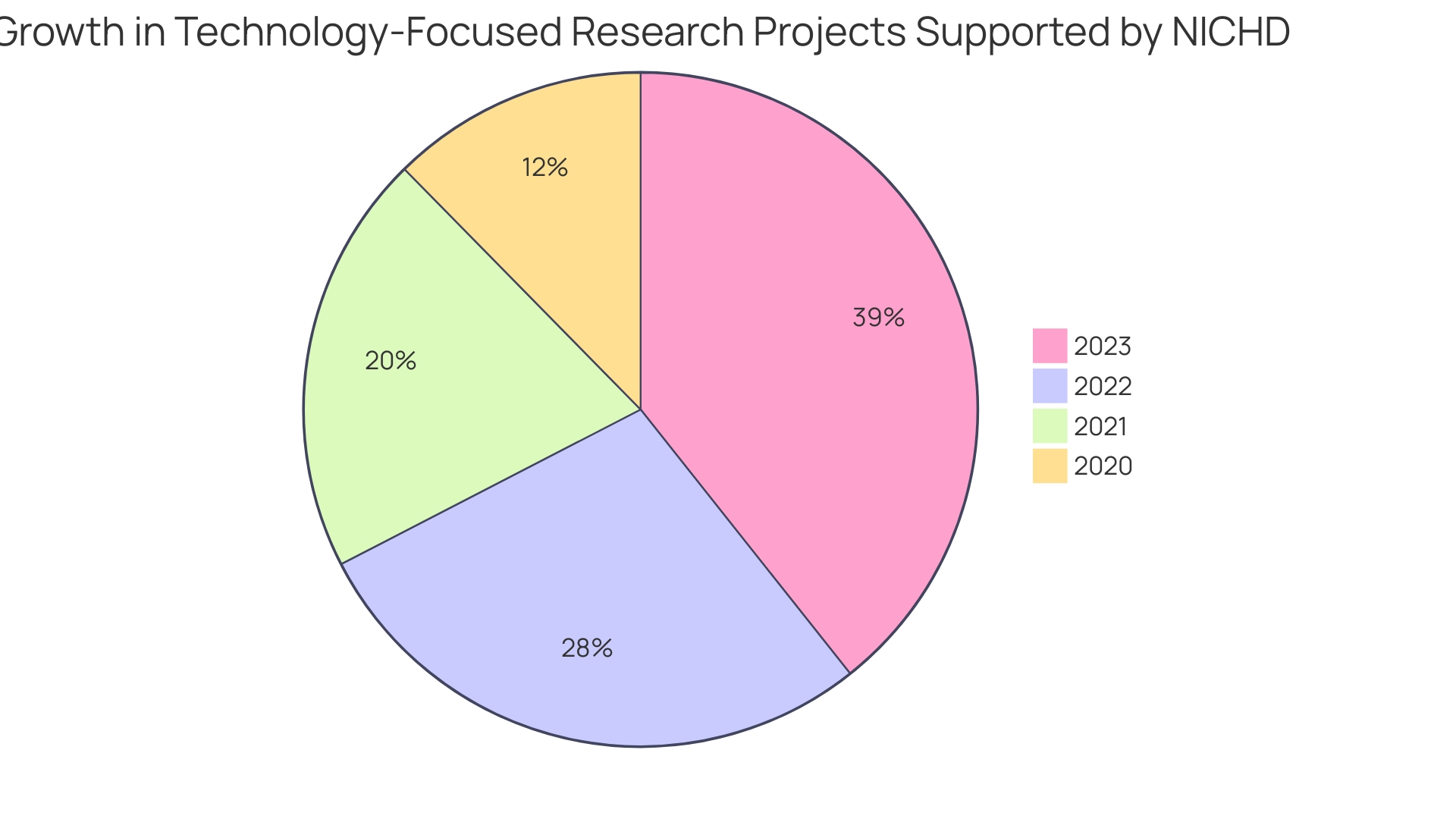
Emergency Response Plans for Elopement
Having a well-defined emergency response plan is crucial for parents of kids with autism and ADHD. This plan should outline immediate actions to take if your offspring elopes, such as promptly notifying local authorities and reaching out to nearby friends or family. Establishing a designated meeting point can also provide a clear place for reunification. Regular practice of this plan ensures that everyone involved understands their roles and responsibilities during an emergency.
The Kevin and Avonte Program, named after two autistic teens who tragically drowned after wandering away, highlights the importance of such measures. Since 2018, the program has provided over $10.3 million to initiatives aimed at preventing such incidents and ensuring swift recovery when they occur. These grants assist public awareness, community partnerships, education and training, and the development of alert systems specifically for elopement emergencies.
Participating in forward-thinking preparation not only improves safety but also aids the mental health of young individuals and their families by decreasing ongoing stress and ensuring that caregivers possess the essential tools. As Dr. David (Dan) R. Offord emphasized, "Engaged, peaceful, and well-supported involvement of young individuals with disabilities in the major domains of their lives is a fundamental determinant of mental health." By having an effective emergency response plan, families can feel more secure and better equipped to handle potential crises.
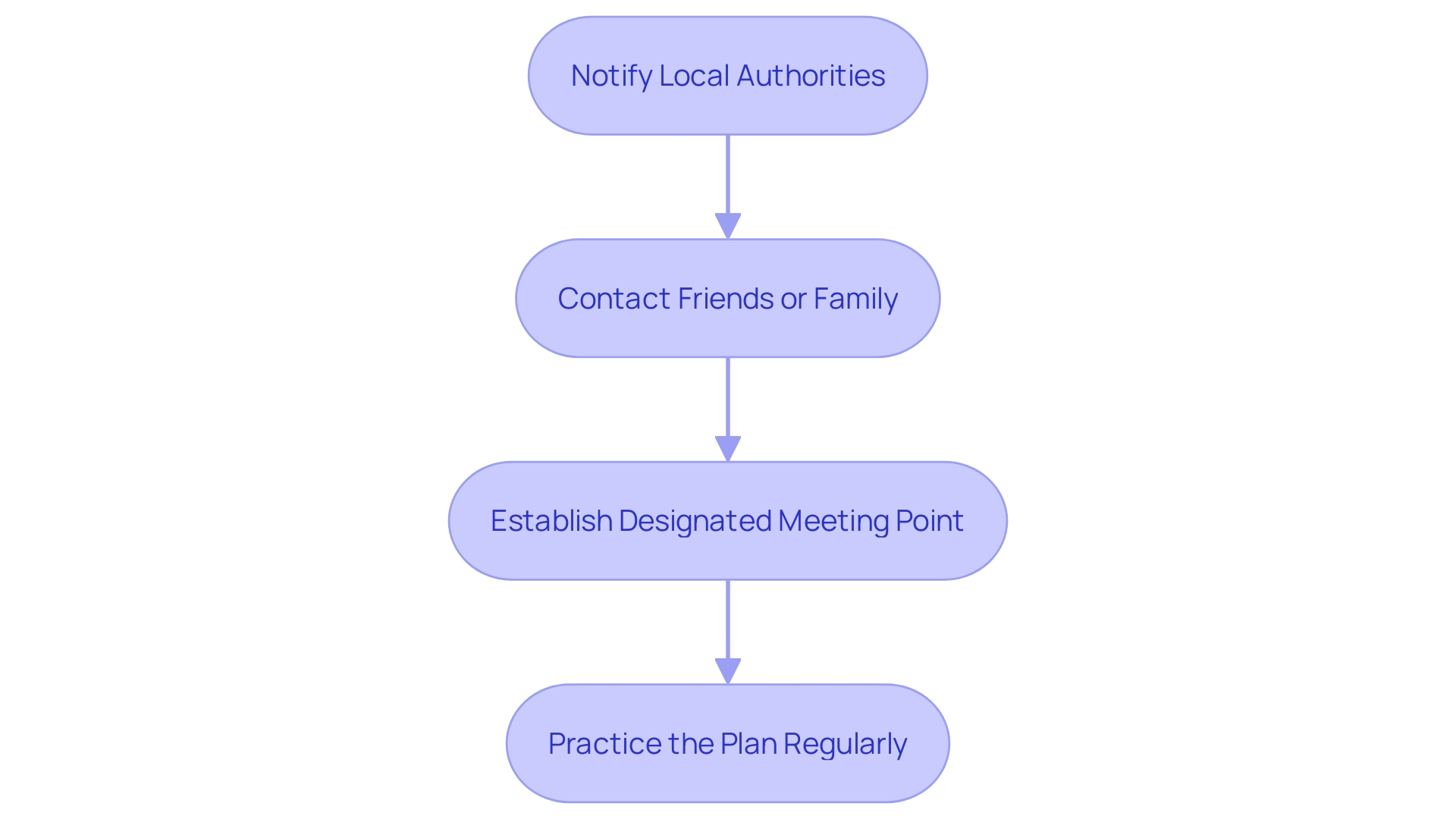
Community Support and Resources for Elopement Prevention
Involving community assets can greatly improve the assistance available for handling elopement. Community support groups, like those started by the Children's Hospital of Eastern Ontario (CHEO) Access Team, offer a forum for parents to exchange experiences and acquire insights, especially for youth with complex needs. These groups often highlight early interventions and treatments, similar to the First Words program in Ottawa, which focuses on preventing and identifying speech and language problems early.
Workshops and online forums also play a crucial role. They offer opportunities to learn from experts and peers, fostering a sense of community and shared knowledge. For instance, virtual asset sharing practices and collective learning platforms are gaining more popularity, providing valuable knowledge on health, education, family, and disability services.
Collaborating with other parents and professionals is essential. As Dr. David (Dan) R. Offord, a distinguished pediatric psychiatrist, highlighted, ensuring that caregivers possess the essential tools is a fundamental aspect of fairness and mental well-being for young individuals with disabilities. By tapping into these community resources, parents can better support their children’s healthy development and navigate the challenges of managing elopement.
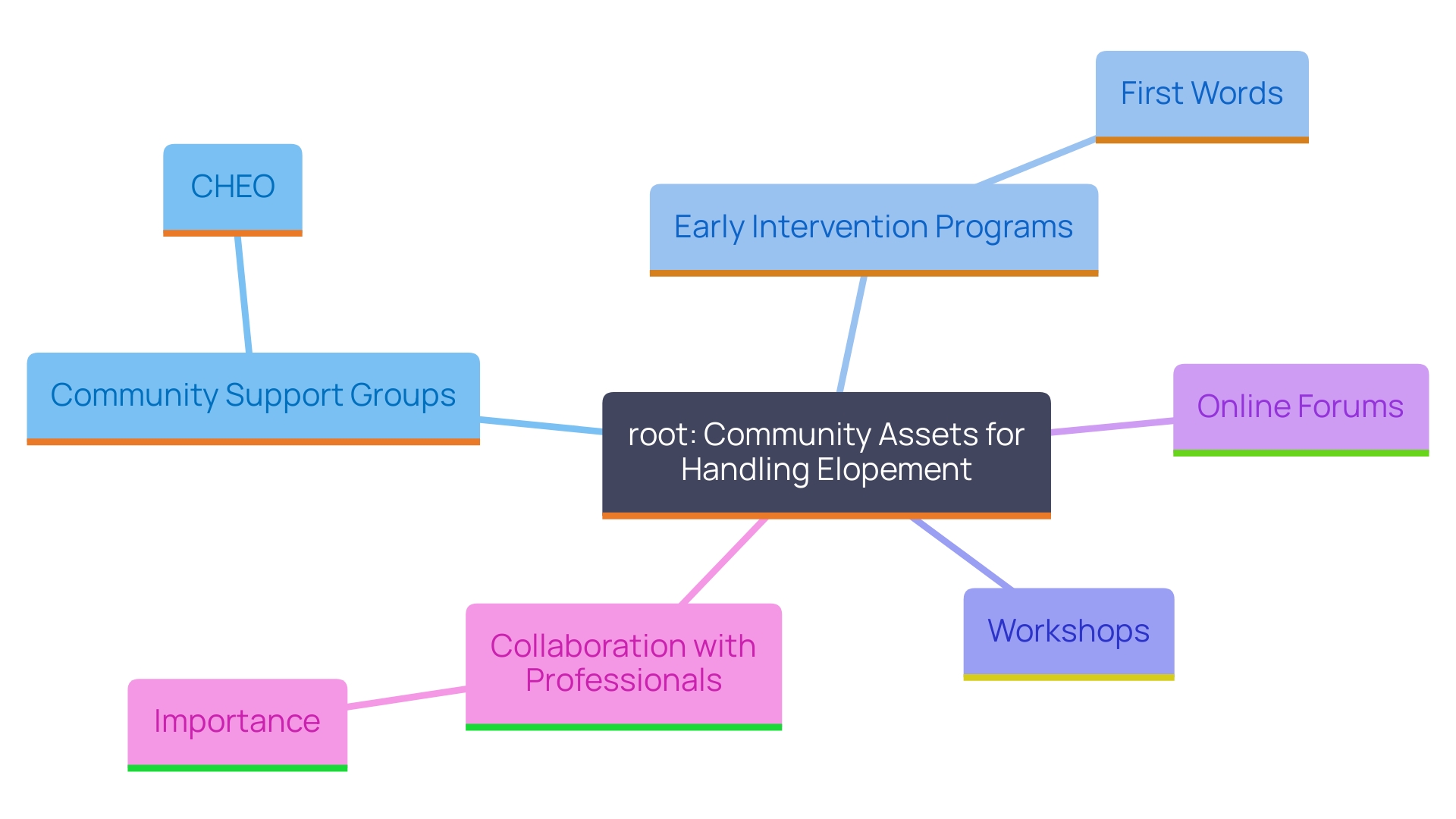
Conclusion
Understanding autism elopement and its implications is vital for ensuring the safety and well-being of children with autism. This article has highlighted the importance of recognizing the causes and triggers of elopement, which can stem from factors like sensory overload and anxiety. By identifying these triggers, parents can implement tailored strategies to mitigate risks and create a supportive environment.
Creating a comprehensive safety plan is essential, encompassing clear communication protocols and regular updates to adapt to the child's evolving needs. Behavioral interventions, such as positive reinforcement and teaching self-regulation skills, can significantly reduce elopement incidents. Moreover, equipping children with essential safety skills through role-playing and hands-on activities enhances their ability to navigate real-life situations confidently.
The integration of technology, including GPS tracking devices and smart home alerts, provides an additional layer of security, allowing parents to respond swiftly if elopement occurs. Establishing emergency response plans and engaging with community resources further empowers families to manage elopement effectively.
By leveraging these strategies and resources, parents can foster a safer environment for their children, ensuring they lead fulfilling lives while minimizing the risks associated with elopement. The collective effort in understanding, planning, and supporting each child's unique needs paves the way for a brighter future.




